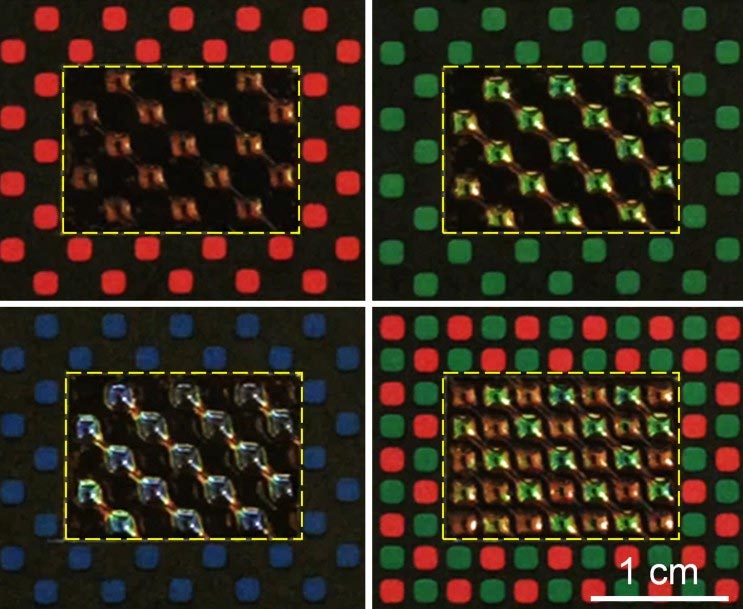Scientists build camouflage tech using liquid crystals that work like octopus cells
Scientists say technology may find new applications in cryptography, optics and robotics

Scientists have developed an artificial version of cells in octopuses and squids that enable the marine creatures to match the colours and patterns of their surroundings, and disappear in an instant.
Researchers from the University of Pennsylvania believe this may lead to novel camouflage applications in robotics, architecture and other fields such as cryptography and optics.
Chromatophores are special cells in octopuses and squids that can expand and retract internal reflective plates in response to external stimuli and allow these molluscs to camouflage with the surroundings as well as to communicate signs of aggression or readiness to mate, researchers explained.
In their new study, published in the journal Nature Materials, engineers used thin, flexible membranes – made from a polymer network of liquid crystals – to build an artificial chromatophore that can change colours instantly from near-infrared to visible to ultraviolet, on command.
The membranes are situated over tiny cavities arranged in a grid, each of which can be inflated to a precise pressure, and as a cavity inflates, the membrane is stretched, shrinking its thickness and shifting its apparent colour, the study noted.
While colour-changing materials that use similar mechanisms have historically needed to be deformed by 75 per cent to shift from red to blue, the new membranes require an amount of pressure equivalent to a gentle touch to change its colours to anything within the visible spectrum.
Earlier designs incorporating this mechanism, scientists say, were impossible to use in settings with fixed dimensions, such as displays or windows, but since the artificial chromatophores need less than 20 per cent deformation, they believe it can be arranged like pixels in an LCD monitor.
“In looking at how some animals have evolved structural colour, we realised they had stretchy cells that worked like pixels in a display and that we could potentially take a similar approach,” study lead-author Shu Yang said in a statement.
The technology, scientists explain, is based on the phenomenon that gives butterfly wings and peacock feathers brighter iridescence than what pigment or dye-based colours provide.
This phenomenon of structural colour, which happens when light interacts with microscopic features of a surface, is recreated in the study using liquid crystals.
When a cavity in the display is inflated, its membrane is stretched. This reduces the pitch of the liquid crystal within the membrane and changes the wavelength of light that is reflected at the viewer.
By recording the precise pressure needed to get each of the artificial chromatophores to a desired colour, the engineers could program them like the pixels in a display.
“I wanted to generate red, green and blue colour simultaneously in a simple operation, so I connected cavities of different width to the same air channel. This means that, despite experiencing the same pressure, the degree of deformation and the colour varies from pixel to pixel, reducing the complexity of the overall device,” study co-author Kim Se-Um explained.
The researchers’ prototype could produce seven-by-five checkerboard patterns that match the shading and texture of a surrounding surface.
They plan to demonstrate 3D displays, as well as “smart” windows which respond to ambient temperatures by changing colour.
“These soft materials may find uses in distinct applications such as cryptography, adaptive optics and soft robotics,” the researchers wrote.
Subscribe to Independent Premium to bookmark this article
Want to bookmark your favourite articles and stories to read or reference later? Start your Independent Premium subscription today.

Join our commenting forum
Join thought-provoking conversations, follow other Independent readers and see their replies